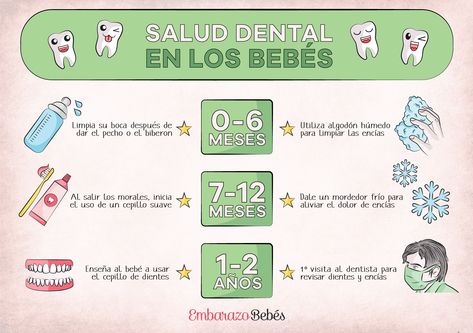A los 6 meses, la leche materna continúa siendo una fuente vital de nutrición, pero no es suficiente por sí misma. Además de la leche materna, ahora debes ofrecer alimentos sólidos a tu bebé para suplir sus nuevas necesidades.
Asegúrate de darle a tu bebé sus primeros alimentos después de que lo hayas amamantado, o entre sesiones de lactancia, para que tu bebé continúe amamantando lo máximo posible.
Cuando comiences a darle a tu bebé alimentos sólidos, ten mucho cuidado de que no se enferme. Mientras gatea y explora, los gérmenes pueden propagarse de sus manos a su boca. Protege a tu bebé de las enfermedades lavando sus manos y las tuyas con jabón antes de preparar los alimentos y darle cada comida.
Los primeros alimentos de tu bebé
A los 6 meses, tu bebé apenas está aprendiendo a masticar. Sus primeros alimentos deben ser blandos para que sean muy fáciles de tragar, como papillas o frutas y verduras bien trituradas. ¿Sabías que cuando la papilla es demasiado aguada, no tiene tantos nutrientes? Para hacerla más nutritiva, cocínala hasta que esté lo suficientemente espesa como para que no se salga de la cuchara.
Alimenta a tu bebé cuando veas que se lleva las manos a la boca o muestra otras señales de tener hambre. Después de lavarte las manos, comienza por darle a tu bebé solo dos o tres cucharadas de comida blanda, dos veces al día. A esta edad, su estómago es pequeño por lo que solamente puede comer pequeñas cantidades en cada comida.
El sabor de un alimento nuevo puede sorprender a tu bebé. Dale tiempo para que se acostumbre a estos nuevos alimentos y sabores. Ten paciencia y no obligues a tu bebé a comer. Permanece atenta a las señales de saciedad y deja de alimentarlo en ese momento.
A medida que tu bebé crece, su estómago también crece y puede comer más alimentos en cada comida.
Alimentación de tu bebé: 6–8 meses
Entre los 6 y 8 meses ofrece a tu bebé media taza de alimentos blandos dos o tres veces al día. Tu bebé puede comer cualquier cosa excepto miel, que no debe ingerir hasta que tenga 1 año. Puedes comenzar a añadir un refrigerio saludable entre comidas, como puré de frutas. A medida que tu bebé coma cantidades cada vez mayores de alimentos sólidos, debe continuar recibiendo la misma cantidad de leche materna.
Tu bebé puede comer cualquier cosa excepto miel, que no debe ingerir hasta que tenga 1 año. Puedes comenzar a añadir un refrigerio saludable entre comidas, como puré de frutas. A medida que tu bebé coma cantidades cada vez mayores de alimentos sólidos, debe continuar recibiendo la misma cantidad de leche materna.
Alimentación de tu bebé: 9–11 meses
Entre los 9 y los 11 meses, tu bebé puede comer media taza de alimentos tres o cuatro veces al día, además de un refrigerio saludable. Ahora puedes empezar a picar los alimentos blandos en trozos pequeños en lugar de triturarlos. Tu bebé puede incluso comenzar a comer alimentos con los dedos. Continúa amamantándolo cada vez que tenga hambre.
Todos los alimentos deben ser fáciles de comer para tu bebé, además de nutritivos. Haz que cada bocado cuente.
Los alimentos deben ser ricos en nutrientes y proporcionar energía. Además de cereales y papas, asegúrate de que todos los días tu bebé coma verduras y frutas, legumbres y semillas, un poco de aceite o grasa rica en energía y, especialmente, alimentos de origen animal (lácteos, huevos, carne, pescado y aves). Comer una variedad de alimentos todos los días le da a tu bebé la mejor oportunidad de obtener todos los nutrientes que necesita.
Comer una variedad de alimentos todos los días le da a tu bebé la mejor oportunidad de obtener todos los nutrientes que necesita.
Si tu bebé rechaza un alimento nuevo o lo escupe, no insistas. Vuelve a intentarlo unos días después. También puedes probar mezclarlo con otro alimento que le guste a tu bebé o agregar un poco de leche materna por encima.
Alimentación de bebés no amamantados
Si no estás amamantando, tu bebé necesitará comer con más frecuencia. También necesitará otros alimentos, incluidos los productos lácteos, para obtener toda la nutrición que su cuerpo necesita.
Comienza a darle a tu bebé alimentos sólidos a los 6 meses, tal como los necesitaría un bebé que recibe leche materna. Comienza con dos o tres cucharadas de alimentos blandos y triturados cuatro veces al día. Estos alimentos le darán los nutrientes que necesita al no contar con la leche materna.
De los 6 a los 8 meses deberá recibir media taza de alimentos blandos cuatro veces al día, además de un refrigerio saludable.
De los 9 a los 11 meses deberá recibir media taza de alimentos cuatro o cinco veces al día, más dos refrigerios saludables.
>> Guía: ¡A comer!
>> Guía: Los primeros olores de la cocina de mi casa
>> Videos: Cocínales hoy, es para siempre
6 a 12 meses
Artículo
Conoce qué alimentos puedes darle a tu bebé mes a mes
4minutos
lectura
Feb 5, 2021
¿Tu bebé ya está dentro de la etapa de alimentación complementaria? Si tu pequeño ya mostró todas las señales que te indican que ya puede comer alimentos sólidos, estos consejos te ayudarán para esta nueva etapa.
Tip 1:
Al preparar los alimentos, siempre lávate las manos, hazlo en un lugar limpio, lava y desinfecta frutas y verduras, cuece los alimentos y utiliza una licuadora o procesadora para alcanzar la consistencia adecuada.
Tip 2:
No utilices sal ni azúcar añadida. Evita ponerle azúcar y sal a los alimentos y compra productos que no tengan azúcar añadida (Es decir SI pueden tener azúcar en su lista de ingredientes como parte de los nutrientes del alimento pero NO añadida).
Tip 3:
Para darle de comer, sienta a tu bebé en una silla alta, checa la temperatura de los alimentos para evitar quemaduras y utiliza una cuchara pequeña con contornos lisos y suaves.
Tip 4:
Puedes empezar con dos comidas al día e ir aumentando gradualmente a 3, al llegar al año, tu bebé ya debería comer 3 veces al día y hacer 2 pequeñas colaciones.
Tip 5:
Evita distracciones. El momento de la comida deberá de ser un momento positivo en donde tengamos foco en los alimentos que comemos, por lo que debemos evitar celulares, juegos, televisión etc.
El momento de la comida deberá de ser un momento positivo en donde tengamos foco en los alimentos que comemos, por lo que debemos evitar celulares, juegos, televisión etc.
¿Qué alimentos dar?
Alimentos suaves, ricos en nutrimentos y fáciles de digerir. Y ricos en nutrientes como vit A, hierro y zinc.
Frutas como manzana, plátano, pera, nectarina, aguacate.
Verduras como chayote, zanahoria, papa, camote, brócoli, coliflor, ejotes.
Alimentos de origen animal como Pollo, carne, pavo, ternera, hígado.
Cereales fortificados especiales para bebés, avena, arroz, etc.
Productos recomendados para esta etapa:
Cereal Gerber ® primera cucharadita o +6 meses
Papillas Gerber® etapa +6 Cosecha Natural Fruta o Vegetales
Bebida hidratante Gerber® Toque de fruta
Cereal Nestum®
Alimentación a los 7 meses
Ya puedes tener más variedad de alimentos e integrar las leguminosas.
Sigue con los mismos grupos de alimentos anteriores, pero con consistencia de puré o picado fino versus papillas. Y puedes integrar leguminosas como frijoles, lentejas en consistencia fácil de masticar, bien remojadas y cocidas.
Productos recomendados para esta etapa:
Cereal Gerber ® primera cucharadita o +6 meses
Papillas Gerber ® etapa +6 Cosecha Natural Fruta o Vegetales
Bebida hidratante Gerber ® Toque de fruta
Cereal Nestum ®
Alimentación a los 8 meses
Seguir con nuevas combinaciones de alimentos y puedes integrar derivados lácteos (como yogurt y queso), pescado y huevo. Con consistencias de picado fino y machacado o palitos tipo Baby Led Weaning.
Productos recomendados para esta etapa:
Cereal Gerber ® +8 meses
Papillas Gerber ® Cosecha Natural y Comidita Casera
Bebida hidratante Gerber ®
Cereal Nestum ®
Puffs y Chips de Gerber ®
Alimentación a los 9 meses
Nuevas texturas, más grumosas. Aquí ya podemos integrar colaciones adicionales a las 3 comidas principales.
Aquí ya podemos integrar colaciones adicionales a las 3 comidas principales.
Utiliza snacks o colaciones sanas que estimulen su desarrollo de agarre y pinza fina.
Productos recomendados para esta etapa:
Cereal Gerber ® y Nestum ®
Papillas Gerber ® Cosecha Natural y Comidita Casera
Bebida hidratante Gerber ®
Puffs y Chips de Gerber ®
Alimentación a los 10 meses
A esta edad ya incluyó todos los grupos de alimentos (con excepción de la leche de vaca que no se recomienda antes del año), por lo que podrá tener una dieta más variada, es importante que en las 3 comidas principales le demos 1 alimento de cada grupo.
Productos recomendados para esta etapa:
Cereal Gerber ® y Nestum ®
Papillas Gerber ® Cosecha Natural y Comidita Casera
Bebida hidratante Gerber ®
Puffs y Chips de Gerber ®
Alimentación a los 11 meses
Nuevas texturas, en trocitos suaves o alimentos en forma larga o pequeños pedazos.
Al llegar a los 12 meses debería de estar consumiendo aproximadamente hasta 100 diferentes alimentos.
Productos recomendados para esta etapa:
Cereal Gerber ® y Nestum ®
Papillas Gerber ® Cosecha Natural y Comidita Casera
Bebida hidratante Gerber ®
Puffs y Chips de Gerber ®
Alimentación a los 12 meses
Al año de edad el bebé comienza a incorporarse a la dieta familiar, cuidando las texturas fáciles de masticar, así como la calidad de los alimentos, ricos en nutrientes y balanceados.
Productos recomendados para esta etapa:
Cereal Gerber ® y Nestum ® +12 meses
Papillas Gerber ® Cosecha Natural, Comidita Casera y Gourmet
Bebida hidratante Gerber ®
Puffs y Chips de Gerber ®
Pouch Gerber ® Junior de fruta, verdura, yogurt.
Leches de crecimiento como: NAN 3, NAN Confort Total 3, Nido Kinder ®, Excella Gold ®.
Tómense su tiempo, es un proceso de aprendizaje donde ambos deben ser pacientes, procura que la hora de la comida sea un momento agradable y feliz para ambos.
Levchuk Victoria ©
Complementary foods at 12 months are extensive, perhaps the baby is already eating from the common table. With the right planning and creativity in baby food, most mothers strive to feed their baby healthy meals. The child mainly eats fruits, vegetables, whole grains, dairy products, fish and lean meats. This article provides information on complementary foods for children over 12 months of age.
Contents:
At 12 months , most mothers make the decision to wean their baby from the breast or formula. Yes, at 12-14 months weaning from breast milk is easier and faster than at a later date, but it must be borne in mind that breast milk does not lose its beneficial and amazing properties and continues to give the baby a lot of good things for his immunity, general development and health . Therefore, it is worth thinking carefully and making an informed decision, because even WHO recommends continued breastfeeding up to 2 years of age or beyond. Whatever decision is not made, it is necessary to gradually wean the child from the breast or bottle, so if complementary foods are introduced normally, the child fully eats 3 times a day and 2 breastfeeding or formula. For starters, you can stop breastfeeding after complementary foods, then remove morning feeding and replace it with full-fledged complementary foods, so we gradually get to evening feeding and night feeding, remove evening feeding and, last but not least, night feeding. Some of the mothers remove the nightly feedings first, and then replace the evening feedings with yogurt or kefir. The main thing here is the gradual replacement of breast milk or formula with complete complementary foods. The whole process will take several months at most, without nerves and stress for mother and child.
Some of the mothers remove the nightly feedings first, and then replace the evening feedings with yogurt or kefir. The main thing here is the gradual replacement of breast milk or formula with complete complementary foods. The whole process will take several months at most, without nerves and stress for mother and child.
Complementary foods at 12 months: What to feed???
The diet of a 12-month-old child is very varied, so we continue to feed the products that were introduced earlier and continue to introduce new ones.
Complementary protein foods at 12 months
At 12 months, you should think about adding yolk to your baby’s diet. As an allergenic product, most pediatricians advise introducing it closer to 12 months. Usually, quail eggs are chosen as the first acquaintance of a child with the yolk as a less allergenic product. They are boiled, cleaned and offered ½ part of the yolk. Most likely, the child will refuse it in its pure form, since it is a little dry and unpleasant to swallow, so we advise you to add the yolk to porridge or vegetable puree. We remind you to introduce the product in the second feeding and the reaction is monitored for two days, new products are not introduced during this period. Standby mode 5-7 days, i.e. during this period, there may be redness of the cheeks, priests, body of the child, loose stools, etc. if something like this happened, we stop giving the yolk, and we turn to the pediatrician.
We remind you to introduce the product in the second feeding and the reaction is monitored for two days, new products are not introduced during this period. Standby mode 5-7 days, i.e. during this period, there may be redness of the cheeks, priests, body of the child, loose stools, etc. if something like this happened, we stop giving the yolk, and we turn to the pediatrician.
If the yolk was introduced earlier and everything is fine, then 2 months after this event, the protein is introduced into the child’s diet. After a full input of the product, you can create a menu consisting of half a chicken egg or one quail egg, as the child grows, the volume increases. Do not forget about the children’s steamed omelette, beauty!
Complementary meat at 12 months
Complementary foods at 12 months require that the child is familiar with lean meat, in particular with turkey, rabbit, lean beef. Closer to 12 months, many parents introduce chicken into the child’s diet , since this meat product is present everywhere in the adult menu.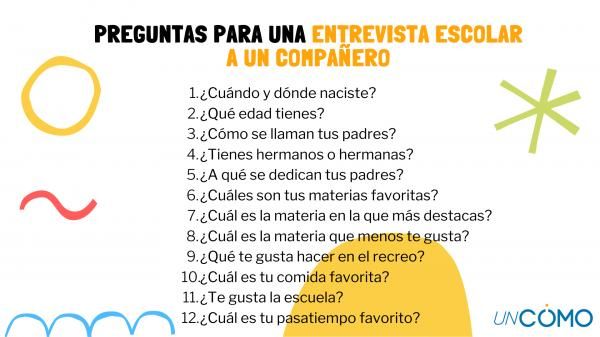 It’s easier to transfer the child to a common table, with the introduction of chicken into baby food, you can safely cook soup or borscht for the whole family, including the little man. However, it is worth carefully introducing chicken meat into the child’s diet, as an allergic reaction is possible. Of course ideal organic poultry, but not all parents have the opportunity to buy this. Therefore, we choose low-fat chicken, it is better to take skinless fillet, a product that you constantly take, if the child was fed breast milk, then most likely he is already familiar with this type of food through mother’s milk. Chicken meat is cooked in a secondary broth, introduced as a regular new product, with monitoring of the child’s reaction to it.
It’s easier to transfer the child to a common table, with the introduction of chicken into baby food, you can safely cook soup or borscht for the whole family, including the little man. However, it is worth carefully introducing chicken meat into the child’s diet, as an allergic reaction is possible. Of course ideal organic poultry, but not all parents have the opportunity to buy this. Therefore, we choose low-fat chicken, it is better to take skinless fillet, a product that you constantly take, if the child was fed breast milk, then most likely he is already familiar with this type of food through mother’s milk. Chicken meat is cooked in a secondary broth, introduced as a regular new product, with monitoring of the child’s reaction to it.
After the introduction of chicken into baby food, you can add veal and pork to the meat menu, we remind you, not the fatty part, it is advisable to choose lean meat. The child’s body is not yet ready to digest too fatty foods.
Meat broths are introduced into the baby’s menu closer to 12 months, but the meat is boiled in a secondary broth, from which soup or borsch for the baby is cooked. The secondary broth remains for a long time.
Fish food at 12 months
We continue to introduce the baby to fish, the more varied his menu, the better. Therefore, we introduce those varieties of fish that have not been introduced. At 12 months, you can introduce your baby to red varieties of fish, such as salmon. Moreover, in children’s ready-made food there are excellent options for salmon fish puree, which are ideally combined with buckwheat, yummy. Closer to the year, you can introduce the baby to fish broths, just be sure to take a break between the introduction of new meat and fish foods. Ideally, if a new meat was introduced, then a vegetable, then a fish.
Vegetable complementary foods at 12 months
Most vegetables are introduced into the child’s diet by 12 months , you can cook soups and borschiks from them, which makes the baby’s menu very diverse.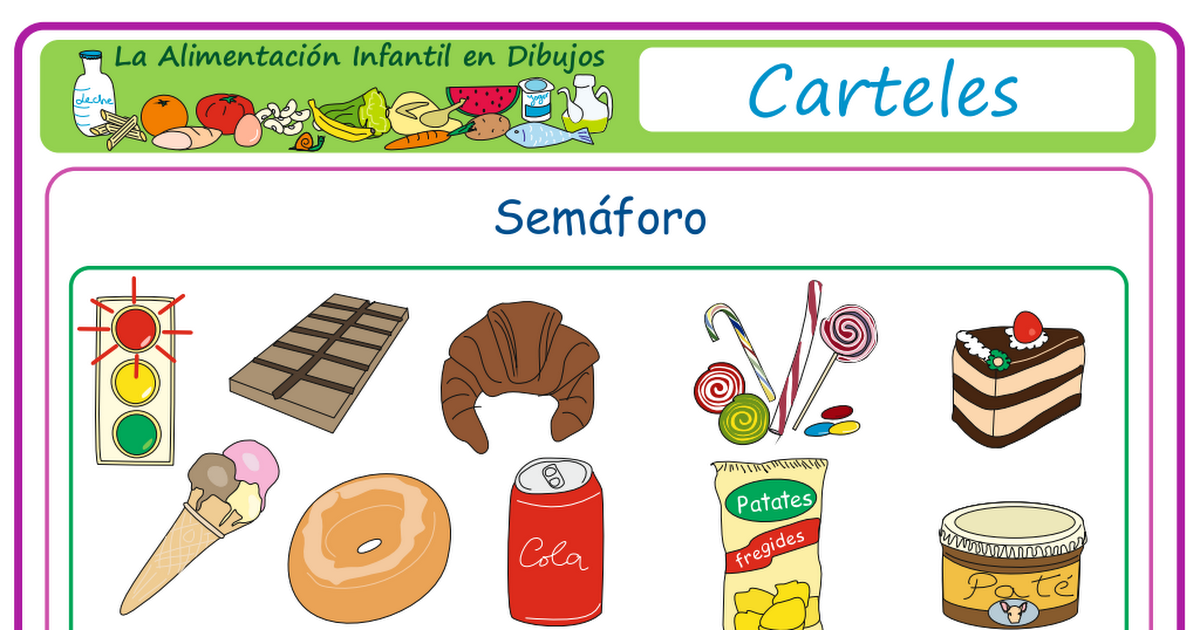 Closer to the year, such products as parsnips, spinach, squash, squash, beets are introduced. Be careful with the last vegetable, there may be an allergy, but this does not mean that it should not be introduced. Too much benefit for a small body to skip the beets.
Closer to the year, such products as parsnips, spinach, squash, squash, beets are introduced. Be careful with the last vegetable, there may be an allergy, but this does not mean that it should not be introduced. Too much benefit for a small body to skip the beets.
Milk complementary foods at 12 months
Milk complementary foods can be varied with soft cheeses, kefir and cottage cheese (if you haven’t introduced them to your diet yet, you can safely introduce them), and also try to introduce whole cow or goat milk. Goat’s milk is considered to be less allergenic, but don’t be fooled into introducing it very carefully, like any new product. With whole milk, the baby’s morning menu will become more diverse, since almost all children like milk porridge with butter.
It may be difficult to introduce kefir into a child’s diet after yogurt, but it is necessary to offer a new product often, since kefir provides so many new opportunities in baby food, for example, you can make children’s cottage cheese from kefir, beauty, and most importantly, easy and cheap .
By the way, with the introduction of milk and eggs, you can safely bake pancakes, pancakes, muffins, children’s curd cookies, etc. for your child. New frontiers in baby food are opening up.
Cereals at 12 months
As it was written above, with the acquaintance of a child with milk, you can cook milk porridges. At 12 months, you can introduce your child to wheat and soy porridge. You can also introduce semolina porridge, but I was convinced from my own experience that it pours on it, so the ideal option is to introduce semolina at 3 years old, when the child’s body is better prepared.
Fruity Complementary foods at 12 months
Fruit foods can also be significantly diversified, so we introduce the baby to wild berries, cherries, raspberry currants. Keep in mind that black, white, red currants are different products, they are introduced separately, you don’t have to think that if we didn’t pour out black currants, you can safely give red currants, no, we introduce them into baby food separately as a new product.
My child got acquainted with citrus on his birthday, we were born before the new year, so tangerines were introduced earlier than the due time. However, for all the time we only poured out on semolina, we seem to react normally to all products. Therefore, when introducing new products, we look at our child, decide to introduce or not introduce, but if we decide to introduce, then gradually, and hide the new product so that the child does not get to know it on his own.
Fruit juice can be introduced into baby food, it is usually recommended to introduce juice from clarified and green fruits, such as an apple. An ideal option, home-made juice, not store-bought. My pediatrician strongly swears at purchased juices, only compotes or freshly squeezed at home.
What about salt and sugar? Closer to the year, pediatricians recommend starting to acquaint the child with these spices, adding a little to the child’s diet. The dish should not be lightly salted or sugared. It is better to let other family members add salt to themselves in a plate if the child is transferred to a common table.
It is better to let other family members add salt to themselves in a plate if the child is transferred to a common table.
However, we continue to monitor what appears on the common table. It is too early for a child to get acquainted with honey, sausages, sausages, chocolate, soda, chips, candies, nuts, etc.
Feeding a child at 12 months: Schedule
As it was written earlier, the child continues to eat 4-5 times a day with breaks between feedings of about 4 hours. Complementary foods are given 3 times a day with 2 additional snacks. The amount of food for one feeding is approximately 240-250 grams.
Feeding a child at 12 months: norms
Nutritional norms are increased due to the introduction of new products, such as fruit juice, cottage cheese, kefir, but the proportion of breast milk or milk formula is significantly reduced. The table shows the approximate norms of food consumption at one meal.
Baby feeding at 12 months: Table manners
At 12 months it is important to pay more attention to table manners than before, as the child has already mastered the basics and now they need to be reinforced every day. Do not forget about the personal example of the parents, it is them that the child imitates, so if the behavior of the parents at the table is far from ideal, then what do you want from the little man, for whom dad and mom are ideal.
We praise the baby more often, do not scold or stuff food, we reinforce intuitive nutrition when the baby decides when he is full. Please note that at this age, children often drop cutlery on the floor. So that this process does not turn into a game for the baby, it is necessary to keep additional clean children’s appliances on the table, as soon as the baby has dropped the spoon, give him a new one without focusing on the fallen appliances. After the meal, you can pick them up or allow the child to pick them up and wash them.
It is also worth noticing how the baby is sitting in the highchair, isn’t it hunched over? If you notice an uneven back, then it is better to consult a doctor and be like a massage, sometimes at this age the back muscles are weak and they need support.
We put napkins or a towel next to the child and wipe the child’s mouth and hands, set an example, let him dry himself. At first, you may have to wash towels every time, but do not despair, the child learns quickly.
Speaking of the bib, it is necessary to acquaint the child with it sooner rather than later, so even if the child refuses, we gently but firmly put the bib on the child, explaining why it is needed.
You can also teach your child to sweep the kitchen after meals. Children often crumble bread on the floor, garbage accumulates under his chair, help your child learn to clean up after himself. It is clear that he will not sweep fully, so he will wave a broom and that’s it, but even this is enough for the child to understand: “I help my mother!”.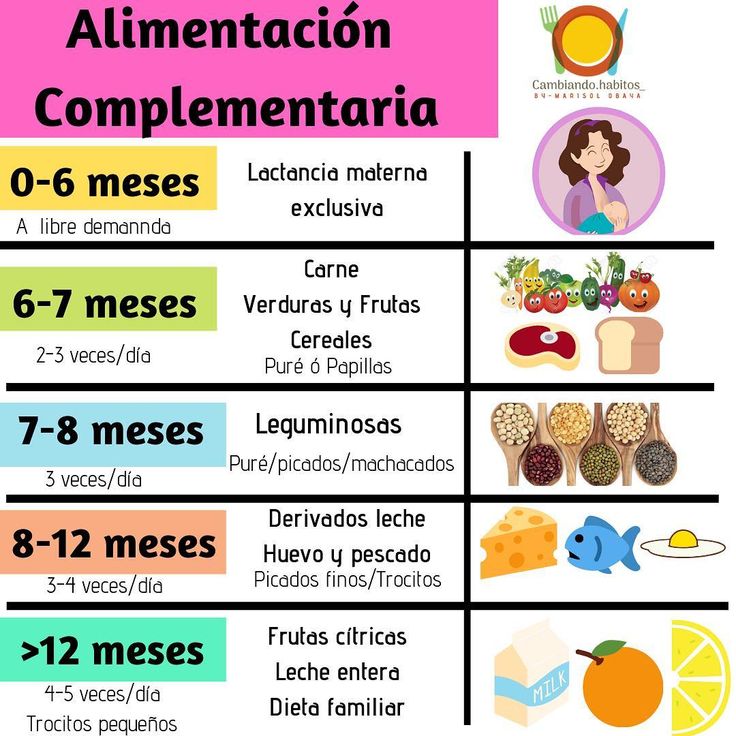 We lay the foundations now, and not later, when he says: “You will clean it yourself!”
We lay the foundations now, and not later, when he says: “You will clean it yourself!”
Complementary foods at 12 months: Water
The drinking regime does not change, be sure to offer water often during the day, ideally, if water is always available to the child. Of course, it’s better in a cup, but if the child constantly pours the mug onto himself, then you should think about a non-spill drinking cup. But at the table we offer all liquids only in a cup, it is important for the development of the child’s skills.
Feeding at 12 months: ideas
Weaning at 12 months is full of different baby food ideas, now everything is easier, especially if the baby is transferred to the common table. Of course, for a child, everything is cooked in a secondary broth without frying vegetables.
Therefore, I offer several ideas for baby food recipes from the common table:
With the introduction of milk and eggs into baby food, the idea of finger food has expanded significantly. Now you can make pancakes, scrambled eggs, pancakes, muffins, baby cookies, cottage cheese casseroles. Everything can be finely chopped, and rolls can be made from pancakes and scrambled eggs, beautiful and convenient. The kid will definitely appreciate your efforts.
Now you can make pancakes, scrambled eggs, pancakes, muffins, baby cookies, cottage cheese casseroles. Everything can be finely chopped, and rolls can be made from pancakes and scrambled eggs, beautiful and convenient. The kid will definitely appreciate your efforts.
12 months is a very important and significant milestone in the life of a child and his parents. The first year of life has passed, your baby has changed and grown up, from a helpless baby he has turned into a funny and curious toddler. At the age of one year, the child already possesses many skills and abilities, but the first psychological crisis also occurs at this stage of development.
After reaching the first year of life, the growth rate of a baby noticeably slows down. The average weight gain at 12 months is about 350-400 g, for the entire first year the baby gains 7-8 kg.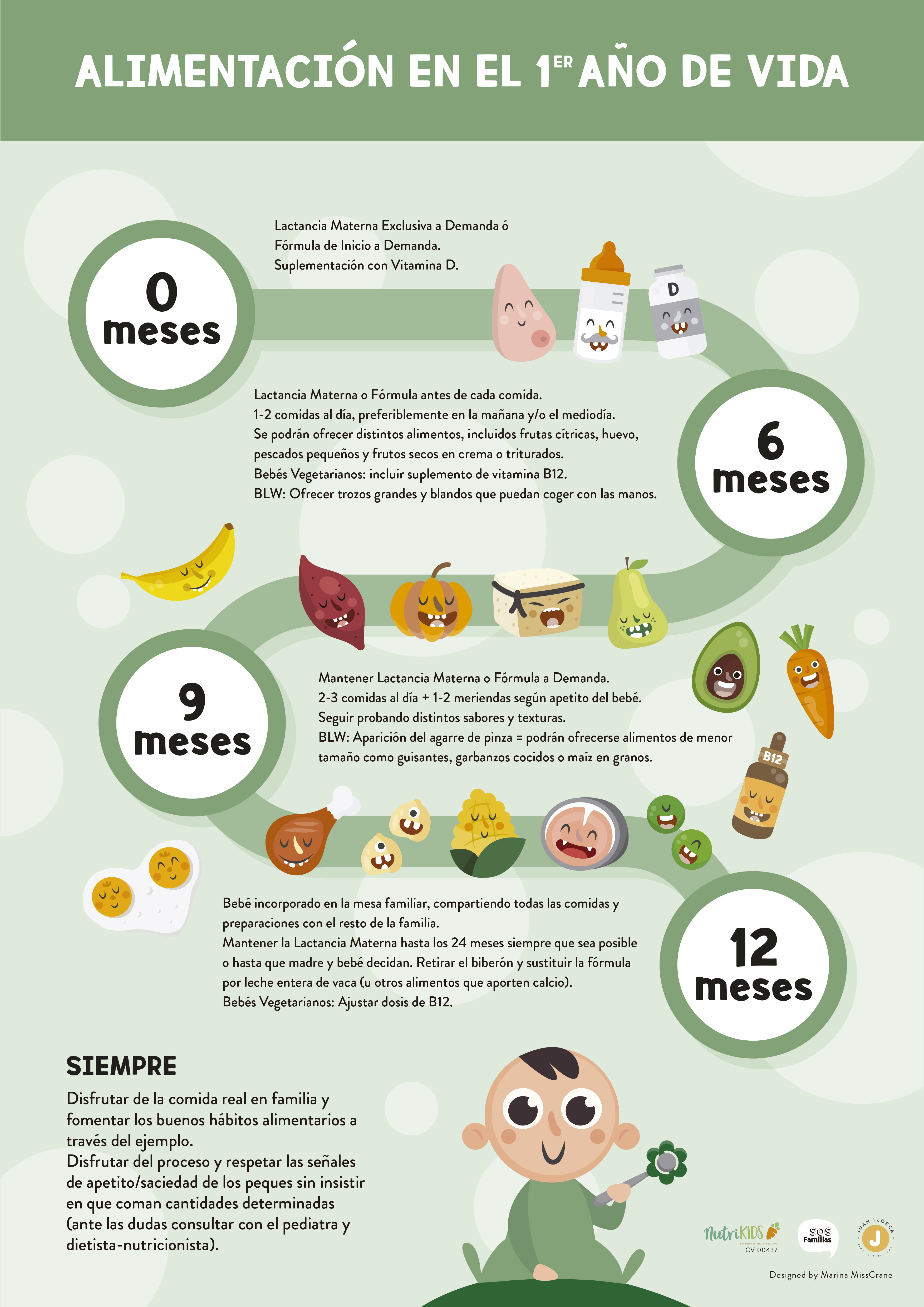 Against the background of a decrease in weight gain, significant psychological and emotional changes are noted, the time of wakefulness and motor activity of the child increase.
Against the background of a decrease in weight gain, significant psychological and emotional changes are noted, the time of wakefulness and motor activity of the child increase.
Each baby develops individually, it is impossible to define rigid boundaries and requirements for all children. Assumed skills, like physical parameters, are very conditional. If your baby does not know how to do something, this is not a reason to worry. The physical parameters and development of a one-year-old child are largely determined by aspects of pregnancy and birth. The limits of the norm adopted in pediatrics are shown in the table.
|
Options |
boys |
Girls |
|
Weight, kg |
8. |
8.5 – 10.8 |
|
Height, cm |
72.3 – 79.7 |
71.4 – 78.5 |
|
Chest circumference, cm |
46 – 51.4 |
45. |
|
Head circumference, cm |
43.9 – 48.6 |
44.2 – 47.3 |
Physical skills and abilities, as well as the growth rate of a child at 1 year old, are also determined by many factors, including hereditary characteristics. Most babies at this age already know how to:

Particular attention should be paid to the fine motor skills of a one-year-old baby. During the game, he already knows how to build a tower or a pyramid of cubes, string pyramid rings on the base, open a cabinet, turn a tap, hold a cup and cutlery in his hands. It is still difficult for a baby to eat independently, but this skill is already beginning to develop. The same applies to hygiene procedures, the child himself cannot yet wash himself properly, but looking at adults, he is already making such attempts.
Baby tights
390 ₽
80-92 cm / 12-24 months
Babies of the first year of life are very curious, which, combined with the active development of the intellect and physical activity, gives amazing results. The main sign of cognitive development is the observation and repetition of the behavior of adults.
The baby already feels and understands the reactions of adults to various actions, movements, sounds. He has well-developed facial expressions, he expresses his emotions well, sometimes he does it intentionally in order to evoke an appropriate reaction from others. He is very happy if he manages to make his parents laugh. In the course are movements (dances, tilts, funny poses), facial expressions (grimaces, funny grimaces).
At the age of 12 months, the rudiments of creative inclinations begin to appear in a child. It is worth watching the baby – what does he like? Some babies react very actively to music, immediately begin to move rhythmically. Others show a passion for drawing. Finger paints are usually suitable for children at this age. Most children in the first year of life love movement, games of catch-up, easy accessible physical activities.
One of the important stages in the cognitive development of a child at 12 months is the first signs of the instinct of self-preservation.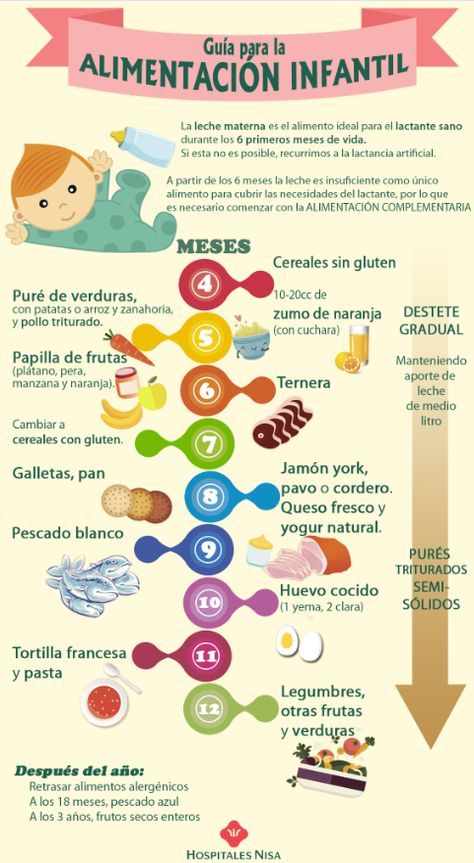 For example, this manifests itself in the fear of heights. Having climbed too high up the children’s ladder, the child is looking for support or the mother’s hand. In some babies, the instinct of self-preservation manifests itself in the form of fear of strangers, for example, doctors. It is very important at this stage to show the baby that he is safe, and also to set boundaries for the available entertainment, but at the same time not to scare him.
For example, this manifests itself in the fear of heights. Having climbed too high up the children’s ladder, the child is looking for support or the mother’s hand. In some babies, the instinct of self-preservation manifests itself in the form of fear of strangers, for example, doctors. It is very important at this stage to show the baby that he is safe, and also to set boundaries for the available entertainment, but at the same time not to scare him.
A child of the first year of life gradually learns the properties of objects. During the game, he learns what it means to be hard and soft, hot and cold, dry and wet. A child at this age is very curious and actively learns the world around him. The most interesting and understandable for him are animals. To help your baby develop, you can show him pictures of animals, along the way demonstrating what sounds they make. The main thing is to remember that any information should be presented in a playful way.
Cognitive development factors include the child’s social skills. Kids at this age are happy to communicate with each other, actively contact with adults. They love to play games (hide-and-seek, catch-up, round dances, creating simple structures from cubes). Of course, the socialization of a child depends on the individual characteristics of the character, but in most cases, children at the age of 1 love to play with their peers.
Kids at this age are happy to communicate with each other, actively contact with adults. They love to play games (hide-and-seek, catch-up, round dances, creating simple structures from cubes). Of course, the socialization of a child depends on the individual characteristics of the character, but in most cases, children at the age of 1 love to play with their peers.
At the age of 1, the process of growth and weight gain slows down in a baby, but intellectual and emotional development becomes more intense. A longer waking period allows the child more time to play. The main ways of learning in children at 12 months are sensory. Tactile sensations develop memory. Touching certain objects, the baby remembers their features and properties. For example, a ball is round and bounces, a car has wheels and can move, a cube is solid and can be built from.
Mental and intellectual features of a one-year-old baby are marked by such achievements:
 Many kids by the age of 12 already have a few words in their vocabulary. The main ones, of course, are “mom”, “dad”, “woman”, “grandfather”, “give”, “drink”. The pronunciation of words can be quite peculiar, some children confuse sounds, distort words, and are expressed in one syllable. This is a natural process of speech development, gradually the pronunciation will return to normal.
Many kids by the age of 12 already have a few words in their vocabulary. The main ones, of course, are “mom”, “dad”, “woman”, “grandfather”, “give”, “drink”. The pronunciation of words can be quite peculiar, some children confuse sounds, distort words, and are expressed in one syllable. This is a natural process of speech development, gradually the pronunciation will return to normal.  Children can already remember what happened yesterday or a few days ago. They can remember and recognize not only close relatives, but also strangers. For example, if children often walk together on the street, they already recognize each other and are happy to meet.
Children can already remember what happened yesterday or a few days ago. They can remember and recognize not only close relatives, but also strangers. For example, if children often walk together on the street, they already recognize each other and are happy to meet. A one-year-old kid surprises his family with new skills every day. The main thing is to support, help develop, talk, play, sing, take regular walks, learn to communicate with the outside world and people.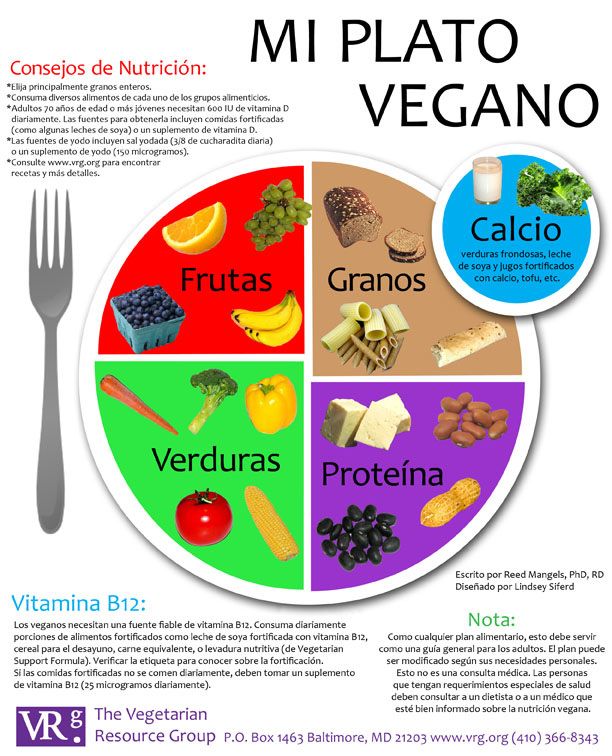 Child psychologists recommend not to impose anything on the child, any classes should take place in the form of a game with a good mood for the baby.
Child psychologists recommend not to impose anything on the child, any classes should take place in the form of a game with a good mood for the baby.
Tendency to touchiness, tearfulness, stubbornness are signs of the first psychological crisis. Psychologists explain it by the fact that the baby ends the period of infancy and begins early childhood. This process is not easy:
 At this age, the first signs of independence begin to appear. However, the inability to adequately assess their capabilities often leads to failure. That is, the kid is trying to do something himself, he does not succeed and it annoys him. After all, he still cannot accept the idea that adults can do what is inaccessible to him.
At this age, the first signs of independence begin to appear. However, the inability to adequately assess their capabilities often leads to failure. That is, the kid is trying to do something himself, he does not succeed and it annoys him. After all, he still cannot accept the idea that adults can do what is inaccessible to him. If your baby has the first signs of the crisis of the first year, do not be discouraged or panic. Be patient and show understanding. It is very important to find a middle ground – not to show aggression towards the child and not to indulge his whims. The well-known pediatrician Dr. Komarovsky recommends that parents develop a tactic of behavior with the baby, based on a number of rules.
 In no case should everything be allowed or everything forbidden. There should not be too many bans, but they should be permanent.
In no case should everything be allowed or everything forbidden. There should not be too many bans, but they should be permanent. 